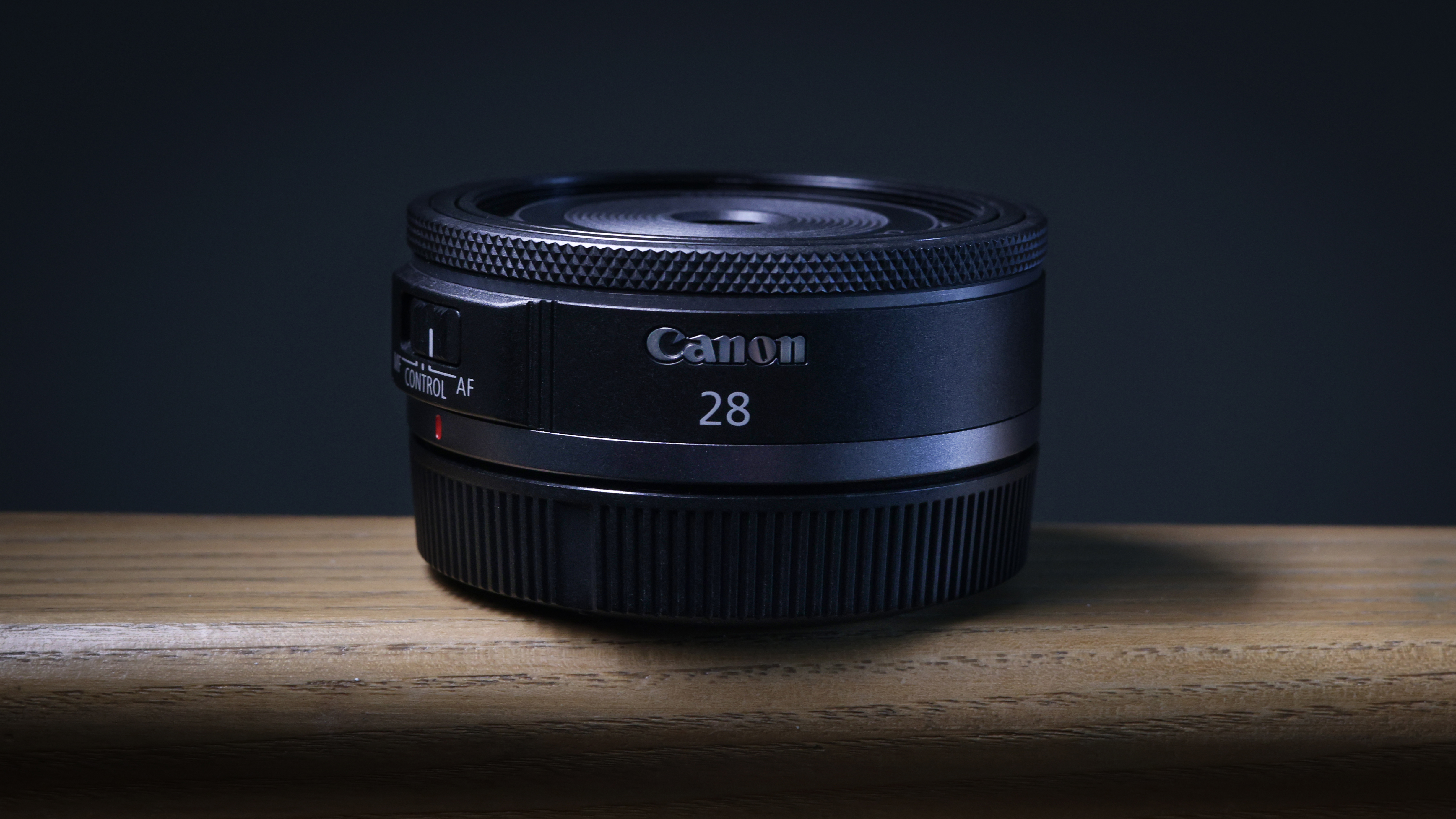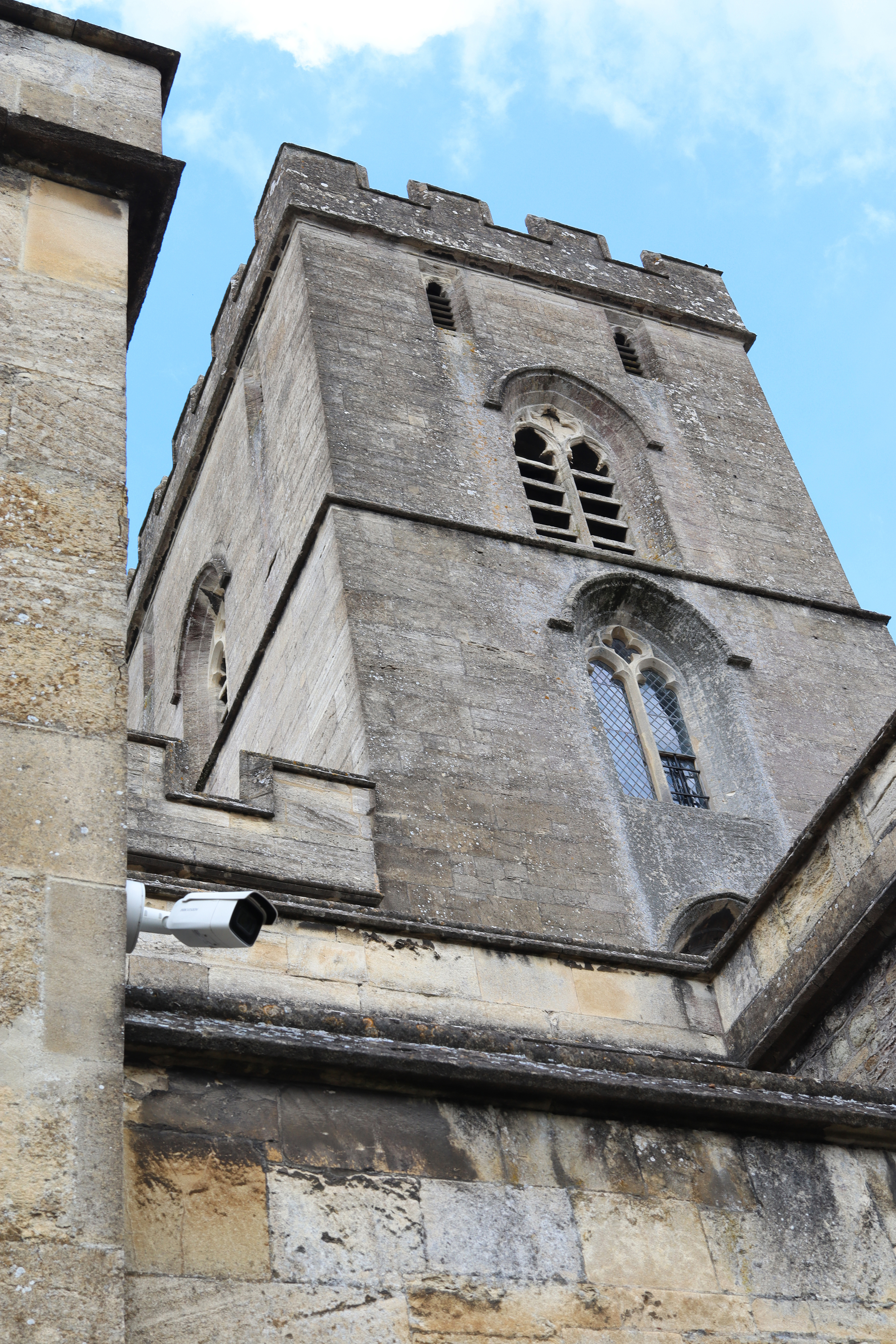Early Verdict
We still need to conduct our lab tests, but the Canon RF 28mm f/2.8 STM has really captured our hearts. It's pocket-friendly in terms of both size and price, but doesn't compromise on performance. While its a worthy optic on both full frame and APS-C bodies, it truly comes into its own when paired with the Canon EOS R50 or R100 – where, as the niftiest nifty fifty, it becomes an essential prime lens for everyday shooting, travel, street photography and video work.
Pros
- +
Pocket-sized pancake lens
- +
Useful FF/APS-C focal length
- +
Very affordable
Cons
- -
Very thin focus ring
- -
RF 24mm is more versatile
Why you can trust Digital Camera World
The Canon RF 28mm f/2.8 STM is Canon's first ever pancake lens for the RF mount – and it's also the smallest ever RF mount lens. However, there's much more to this optic than its pocket-friendly size (and price).
Its 28mm focal length helps flesh out the impressive range of affordable RF primes (which now comprises a 16mm, 24mm, 35mm, 50mm and 85mm), giving full frame users a useful wide-angle option for street, travel and reportage. However, with an effective 44.8mm focal length on APS-C bodies, it pairs perfectly with compact cameras like the Canon EOS R10, Canon EOS R50 and the Canon EOS R100.
Still, beyond its appeal as a dinky little pancake lens, does the Canon RF 28mm f/2.8 STM have what it takes to rank among the best Canon RF lenses?
Canon RF 28mm f/2.8 STM: Specifications
Mount: Canon RF
Full-frame: Yes
Autofocus: Yes
Stabilization: No
Lens construction: 8 elements (incl. 3 aspherical "Seagull") in 6 groups
Diaphragm blades: 7
Minimum aperture: f/22-32
Minimum focusing distance: 0.23m
Maximum magnification ratio: 0.17x
Filter size: 55mm
Weight: 120g





Canon RF 28mm f/2.8 STM: Key features
The headline feature of the new 28mm f/2.8 is obviously its diminutive size, measuring just 24.7mm in length and weighing 120g – making it the smallest (and, unless we're mistaken, the lightest) RF lens available.
It boasts Canon's multi-layered Super Spectra coating to minimize ghosting and flare, which is extremely useful for a wide-angle lens without a hood. Although of course, this is only a wide-angle optic on a full frame camera; when mounted to one of Canon's APS-C bodies, its equivalent focal length makes this effectively much closer to a nifty fifty.
Usefully, the lens also features focus breathing correction – something that's extremely helpful for its application as a vlogging lens, where it will no doubt find an eager audience.
The best camera deals, reviews, product advice, and unmissable photography news, direct to your inbox!
As with all first-party RF lenses, you'll find a customizable ring at the nose of the optic. This can be switched between its application as a standard focus ring, as well as the control ring function to change exposure parameters such as aperture, ISO and so on.
Canon RF 28mm f/2.8 STM: Build & handling
In order to facilitate the pancake-like construction of the RF 28mm, Canon has employed custom-shaped "Seagull" elements using PMo (plastic-molded) technology.
These non-circular lens elements not only enabled the engineers to produce a more compact (and affordable) design, but also afforded them great flexibility in terms of where to place the stepper motor of the autofocus system.
In addition, Canon says that these Seagull elements (which, it seems, are making their debut in this lens) produce higher image quality in the corners – something we will see for ourselves when we conduct our full lab tests.
Despite only weighing 120g, the lens doesn't feel at all cheap or plasticky – instead it is a satisfyingly sturdy optic (though obviously it possesses no weather sealing at this price point).
The customizable ring on the end of the lens is modified by a small selector switch on the side, toggling it between a control ring (for exposure control) and a manual focus ring. Though given how thin it is (by virtue of the pancake nature of the lens), some may find it fiddly to manipulate as a focus ring.
Canon RF 28mm f/2.8 STM: Performance
We used the Canon RF 28mm f/2.8 primarily on the Canon EOS R100, and it honestly feels like this lens was designed for the compact APS-C bodies like it and the R50. The setup is absolutely perfect for a walkabout, everyday lens, and we can see this being a favorite of street shooters and travel photographers.
In addition, we gave it a workout on the chunkier Canon EOS R5 where it was every bit as at home – though if you're using a bigger body, obviously the advantages of the pancake size aren't quite as pronounced (so you might find the Canon RF 24mm f/1.8 Macro more appealing, with its faster aperture and close-up abilities).
Whichever body we used, the 28mm was more than capable of keeping up with the Dual Pixel focusing. It gave us snappy, responsive AF performance whether we shot static, moving, human or animal subjects. The focus breathing correction is also, as always, incredibly welcome for video shooting – and this will surely find a home as a go-to lens for vloggers and content creators on the go.
If you're not used to the uncommon 28mm focal length, we think you'll find a great deal of joy in composing your scenes on a full-frame camera. Being a little bit wider than the traditional 35mm used for street and reportage photography, we felt more inclined to incorporate areas of environmental interest than we otherwise might. It's always a joy to experiment with unfamiliar focal lengths, inviting you to "rediscover" the joy of framing.
And of course, on an APS-C camera this is near-enough a 50mm – and it's a brilliant shoot-what-you-see optic in this regard, despite being a step slower than a traditional nifty fifty. Still, the f/2.8 aperture is more than wide enough to be effective in most lighting conditions – and can even provide pleasant subject separation with the appropriate proximity to your subjects.
Canon RF 28mm f/2.8 STM: Verdict
We'll have to wait until we get the lens in the lab, to see if Canon's claims about things like corner sharpness are true. As it stands, though, we love the results that the Canon RF 28mm f/2.8 produces.
We'd even go so far as to say that it's a must-have lens if you own the R50 or R100. While the RF-S zoom lenses are more "complete" in terms of versatility, this is pretty much an essential optic for those bodies – and is a great way to acclimatize to using a fixed focal length, if you've never used primes before.
Which isn't to overlook how good it is for full-frame bodies, too. As noted, the 24mm f/1.8 Macro is arguably more useful for full-framers between its wider field of view, faster aperture and close-up capabilities. However, the 28mm f/2.8 is about half the price – not to mention something like half the weight – so if you want a nice wide walkabout lens, this is a fantastic option.
For both stills and video this is an adaptable and affordable lens that deserves its place in almost every camera bag – especially if you're gearing up for a vacation.

James has 25 years experience as a journalist, serving as the head of Digital Camera World for 7 of them. He started working in the photography industry in 2014, product testing and shooting ad campaigns for Olympus, as well as clients like Aston Martin Racing, Elinchrom and L'Oréal. An Olympus / OM System, Canon and Hasselblad shooter, he has a wealth of knowledge on cameras of all makes – and he loves instant cameras, too.





